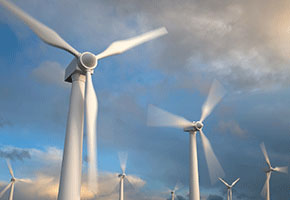Available Technologies
# of Displayed Technologies: 5 / 5
Applied Category Filter (Click To Remove): Energy & Fuels
Revolutionizing Hydrogen Production and CO2 Capture for a Sustainable Future
TS-065143 — The Need:
In the face of pressing environmental concerns and the imperative for sustainable energy solutions, there arises a critical commercial need for systems and methods that can efficiently produce hydrogen (H2) while simultaneously capturing and converting carbon dioxide (CO2) emissions. Trad…
- College: College of Arts & Sciences
- Inventors: Baker, Lawrence "Robert"
- Licensing Officer: Panic, Ana
Ultra-Fast Charging Li-ion Battery Anodes
TS-040614 — A novel battery anode designed to overcome the limitations posed on fast charge batteries by graphite anodes. The new anode increases battery life, is more stable during manufacturing, and has improved heat dissipation qualities.
As technology continues to progress, embedding itself in our daily life from our cars to our wrists, an ever-present concern is the need for batteries with the ability to re-charge quickly. Most of these emerging technologies use Li-ion batteries with graphite anodes. Unfortunately, under fast cha…
- College: College of Arts & Sciences
- Inventors: Co, Anne; Bascaran, Julen
- Licensing Officer: Randhawa, Davinder
Synthesis of Ammonia-Borane from Borane Complexes and Ammonia
TS-015119 — Safe, efficient, and convenient procedures for preparation of pure Ammonia borane in large-scale through displacement reactions have been developed
Ammonia borane, an ideal source of storage hydrogen, was first synthesized 50 years ago, but no synthetic method was reported for industrial scale preparation. For vehicular fuel cell applications, the use of amine-borane compound is costly and lacks a suitable reformer design for the on-demand ge…
- College: College of Arts & Sciences
- Inventors: Chen, Xuenian; Shore, Sheldon
- Licensing Officer: Panic, Ana
 Alcohol Production from Carbon Dioxide
Alcohol Production from Carbon Dioxide
TS-014972 — An electrochemical process on a metal electrode catalyst is used to produce alcohols such as ethanol, ethylene, propanol, acetic acid, ethane, and formic acid from the direct conversion of carbon dioxide
In the United States, there is an increasing interest in ethanol as an alternative fuel source to decrease the dependence on fossil fuels. In 2012, the National Corn Growers Association reported that 27.3% of the corn harvested in the U.S. was used for the production of ethanol. This has sparked a…
- College: College of Arts & Sciences
- Inventors: Co, Anne; Billy, Joshua; Coleman, Eric; Walz, Kendahl
- Licensing Officer: Randhawa, Davinder
 Butanol Production from Renewable Biomass
Butanol Production from Renewable Biomass
TS-014747 — A genetically engineered bacteria pathway directed to selectively generate butanol over competing by-products.
Acetone-Butanol-Ethanol (ABE) Fermentation is one of two methods to produce butanol from biomass feedstocks. Various active enzymes or acids are exposed to a biomass feedstock and subsequently produce primarily acetone, butanol and ethanol. Previous attempts in the industry to use Clostridium stra…
- College: College of Arts & Sciences
- Inventors: Yang, Shang-Tian "ST"; Zhao, Jingbo
- Licensing Officer: Panic, Ana
